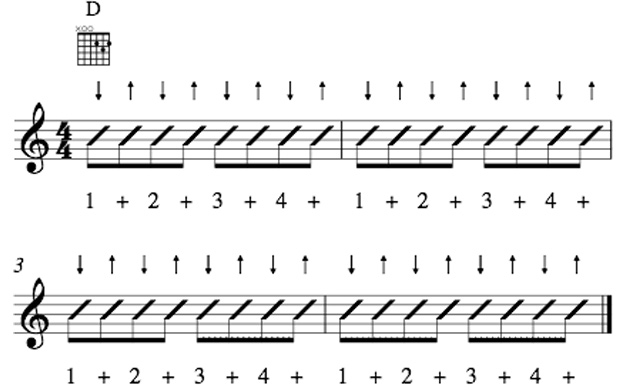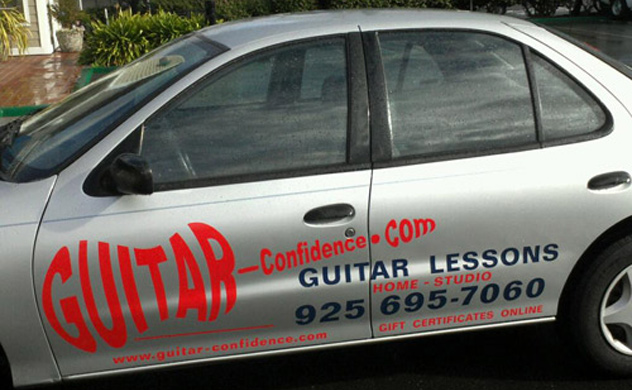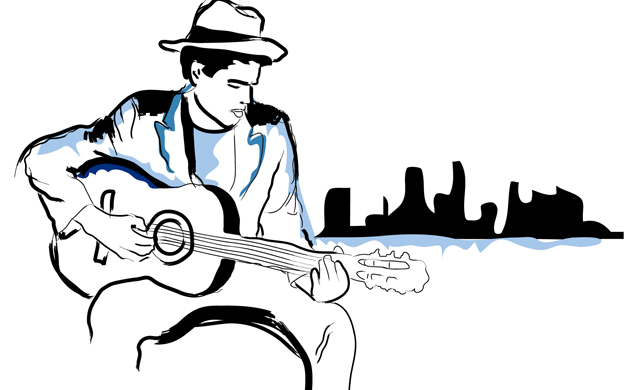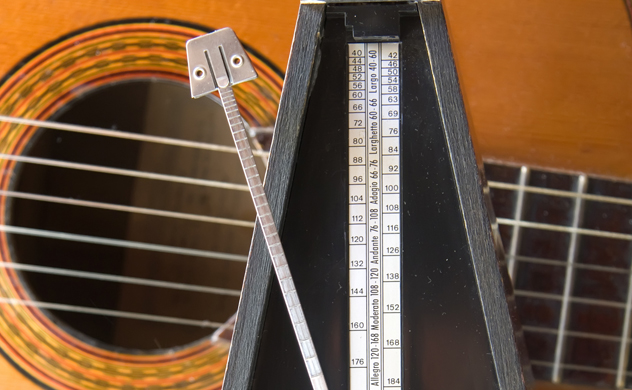
This is a steel string acoustic guitar for the young beginner. Yamaha has been an established name in the guitar business since the 1960’s. They make a guitar that is a great value and can be tuned well.

This Fender Telecaster Electric Guitar is a great value for young adults 14 and up. It is an excellent choice for a young musician performing rhythm and leads with that great Fender tone. Great blues guitarists like Albert King and even great jazz guitarist Joe Pass have used this excellent Fender guitar. Much of the pop music from 1950’s to today has been played by this great guitar.
The 3/4 Size Taylor Acoustic Guitar has an amazing tone with a solid wood top. Even though it is a steel string guitar, the action is so great that it almost plays itself. I recommend this guitar for children 12 and up. It is also great for adults traveling because it is small enough to carry on an airplane and place in an overhead storage bin. Plus it has a great resale value.
This children’s electric guitar package ages 6 – 11 is great way to see how committed young aspiring guitarist is before investing hundreds of dollars. The guitar plays in tune very well and the amp has a head phone jack so the student can practice in their own privacy.

As I travel all over East Bay teaching guitar lessons and performing gigs I find that a lot of musicians, guitarist or instrumentalists are not well prepared for their performance or even guitar lesson. Often, I hear, “That’s not what I want, but I don’t how to explain what I mean.” How many times has that happened at band practice?
Check out:
Lack of communication can result from lack of agreement on terminology. People confuse tempo with rhythm. Tempo is the speed of travel, or beats per minute. Rhythm is the subdivision of each beat. There is a primary and secondary division of each beat. Here is a great link on Rhythm Tips.
The division of the beat defines the feel of the song. It will make it Rock or Swing. Rock is a straight eighth note feel. Swing is a triplet feel. When counting off a song, it should be counted at the speed at which the song is to be played. It’s not count down to blast off.
Often times you will see band members bobbing their heads in unison to make sure the tempo is in agreement. This is important to getting off to a good start. Even though it is a drummers job to keep track of tempos, and to keep even time, it is the responsibility of everybody to be aware of it. Rehearsal is when two or more people, or the whole band, get together to work on a song. Practice is when you work on things alone.
Come to a rehearsal prepared, and ready to work together. Defer to the band leader or musical director. Don’t take suggestions or criticisms personally. Being easy to get along with doesn’t mean you can’t have a point of view, but be respectful of everybody’s time.
Sometimes a song will have pick-up notes, or a lead in to the first beat of the first measure. When that is the case, count a full measure prior to the counts before the lead in. The lead in doesn’t always come in on one. Be aware of where the lead in is in relation to the count.
Remember, the count should be at the speed the song is to be played. That is the whole point of the count.

Mobile is one of the hot words these days – everything is going mobile.For businesses in the East bay of California, if you’re not mobile, you’re dying on the vine. I took my guitar/banjo lessons business in the East Bay mobile a couple of years ago. Of course, I don’t teach guitar over an Adroid or iPhone – by mobile I mean – I come to the student instead of the student having to come into a music shop or studio for guitar lessons.
I have been teaching aspiring musicians at all levels and ages guitar, banjo, mandolin, electric bass, and uke for over 40 years. One of the most common questions is how to come up with strumming patterns that will sound interesting?
I have created (3) interesting patterns that are to be learned at a very slow speed. I8 recommend using a metronome which is free on internet. I recommend starting as slow as 50 beats per minute and add 10 beats at a time until you get up to about 120. That could take days or months depending on what level you are at of course.
These 3 patterns can work on either electric or acoustic steel string guitar. All three patterns use rhythm slash notations in which you apply fingering pressure of your chord you are playing. If you see and {X)that means to mute the chord with allowing your fingering hand on fret board to release the pressure but still keep the chord fingering in place. This creates a real cool percussive clicking rhythmic sound. The chor5d of choice for these 3 patterns is known a C9th dominant chord which groups that play Rhythm and Blues and Funk use all the time.
Pattern 1 is using sixteenth notes which mean four strums per beat. You count sixteenth notes in a four beat per measure as following: 1ee & ah, 2 ee & ah, 3 ee & ah and 4 ee & ah. You alternate your strumming hand with down and up strumming. You are simply applying chording finger pressure only on first sixteenth note of each of the four beats. The other three sixteenth notes of each beat are muted with chording hand on guitar. Please practice very slowly.
Pattern 2 we accenting the first sixteenth note of each beat except notice on beat 3 I’m displacing the accent on the second sixteenth note which creates a new sound.
Pattern 3 incorporates sliding in to c9 from one fret below known as the half step approach from below. So only beat one is different than Pattern 2. Notice you strum B9 on first sixteenth note of beat o9ne and simply slide up with chording hand to c9 but do not strum c9 chord. Simply produce c9th chord by sliding up to it from B9th chord. Then on the 3rd and fourth sixteenth notes you mute them with chording hand and then beats two, three and four are as same as pattern 2.
In closing, you must listen to different recordings to check this style of rhythm guitar out. Go to You Tube and listen to:
Keep on Strumming
Download Guitar Lesson Rhythm Patterns

As I teach beginning to advanced guitar in Benicia and Vallejo I stress all guitar students to work on basic Jazz Chord formations where you use both your pick and fingers to create both a guitarist and bass player sound all by yourself. Some guitar players to check out are Joe Pass, PatMetheny, George Benson, Barney Kessel, Wes Montgomery, and Larry Coryell.
I have 5 Basic chord formations you must learn first in every key:
You will notice left to right known as the chord progression that I go root on bass 6th string of guitar followed by first inversion known as third in the bass followed by 5th in the bass known as second inversion. First take root inversion of all 5 formations and transpose to all keys on 6th string. Then take first inversion and finally followed by second in version. This could take two weeks to two months too master. Then take all 5 versions and practice left to right slowly. You will notice that on beats one and three you pick bass 6th string on downbeat and quickly followed with finger pinching remaining strings on the up beat. Notice on even beats two and four you are just playing passing single bass notes . Just master in key of G only.
Once you have mastered these 5 patterns then refer to my arrangement of Moon Dance by Van Morrison.
Have fun and if you want to see me apply these techniques I’m performing every Sunday night 6:30 to 8:30 p.m. with a bass guitarist doing open mic night doing music from swing era jazz up to contemporary songs. Located at great Vallejo Thai Food establishment known as “ Cha Am”. Food is great and medium pricing and no cover charge. Address is 153 Plaza Drive in Vallejo California.

To become a killer guitar player, you should memorize a few chords ( four, for example) and then simply practice playing them in the order they come in the song. Do this at least ten times slowly from memory before moving on to the next set of changes ( chords). Once the complete passage or song is memorized, play it slowly twice a day for a week or so. Then you can practice “ locking “ in with your metronome or drum machine and then cranking up the tempo! Go to Metronome Online and learn the following:
Learning new chords on the guitar or banjo and memorizing progressions can be tiring work, so don’t spend too long on this assignment- ten or fifth teen minutes a day will soon yield a considerable amount of new chords and repertoire. Chord books I recommend are
Playing the Guitar Techniques – should again be combined with the new musical vocabulary wherever possible. String bending, for example, can be nurtured by practicing licks involving this technique. Do this chromatically up and down the neck so your fingers become used to bending in tune all over the fret board. More info on string bending.
Vocabulary – is the most important area of all your practice program. If you don’t know any music on your guitar or banjo, then you have nothing to play! Who wants to hear scales or exercises, no matter how well they are played! Sure, scales etc.… are important, but only a means to an end. Guitar technique, in my opinion, should subordinate to music.
There are a number of ways for guitar and banjo students to learn musical vocabulary. Friends, books and videos can be one source. However, the best way to learn a new solo, lick, intro or tune, is from working things out by ear. Perhaps a friend or teacher can help you over any bits, but at least try working on your own as well. A great device to purchase is the Tascam Portable CD trainer which helps by slowing down speeds of songs but keeping guitar in same pitch, excellent for all levels of students.
Under the vocabulary heading, you should write down each item you’re attempting to learn. There’s no need to rush, just spend your assigned time limit on each item every day and do your best. Eventually you will have it and can start practicing up to speed. Once you’ve worked out the particular example (from the recording) you should play it over and over for the entire time allowed. If you do this every day, you will soon build up a vocabulary of musical phrases that will become second nature and easy to recall when needed.
This whole approach to practicing guitar & banjo may seem a little clinical to some of you, and if you’re happy with the way you practice now, that’s fine. If you feel your practice time could be more effective, however, it is worth trying these methods for a month or two, Remember, above all, keep your guitar practice as musical as possible and have fun!
Guitar Practice Homework:

Why have a daily practice plan? Now that I have been playing guitar since I was 8 years old and now teach ages 5 and up on guitar in Bay Area. A common question is, “How much time do I need to practice the guitar lessons daily?”
That is an excellent question. If you are under 10, I say 30 minutes a day 5 days per week. If you are older than 10, then 60 minutes a day 6 days a week – if you are serious about your playing, then two hours a day.
Now, let’s take a look at a possible daily practice program lasting an hour and a half.
Objective– To be able to play rock and roll guitar in the styles of Chuck Berry, Eddie Van Halen, Eric Clapton, Jimi Hendrix, Stevie Ray Vaughn, George Benson, Chet Atkins, Andreas Segovia and etc.
It’s important to have a little light at the end of the tunnel, so I’ve included an estimated period of time to achieve your objective. This is “Duration of project.” The times I’m using here are merely examples and every guitar player will need to adjust these according to individual strengths and weaknesses.
Finally, let’s discuss the sort of things you would practice under each heading and how long to spend on each item. Again, this will vary between guitar players and is only a guide.
An example of my assignment to guitar students in Walnut Creek, CA studying rhythm guitar would be playing through a 12 bar blues with a metronome or drum machine. You could vary the tempo and the key every day or so. Any rhythm part will do. The emphasis here is on developing solid time and physical control in all keys and at various tempos. The assignment could be 10 minutes a day. This may not sound long enough, but try playing rock and roll rhythm guitar for 10 minutes- nonstop, with 100 % concentration.
Chord Vocabulary– This step of the game plan should be combined with learning new tunes. It’s vital that you try and combine as many different aspects of developing you’re playing as possible under each of the following categories. The following is an suggested example of weekly practice program:
Check out these website for more info & perspective:
Guitar Confidence
4101 Dublin Blvd
Suite F, #537
Dublin, CA 94568
